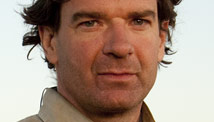Jun 24, 2010
Petraeus, the Ph.D. warrior, faces big test
By Peter Bergen, CNN National Security Analyst
June 24, 2010 10:44 a.m. EDT
 STORY HIGHLIGHTS
STORY HIGHLIGHTS
MORE ARTICLES  STORY HIGHLIGHTS
STORY HIGHLIGHTS
- Gen. David Petraeus, who has a Ph.D. from Princeton, wrote the book on counterinsurgency
- Peter Bergen says Petraeus accomplished a huge turnaround in Iraq
- The general took many steps to gain public support for U.S. efforts in Iraq, Bergen says
- He notes Petraeus has said Afghanistan will be harder

FEATURED BOOK

